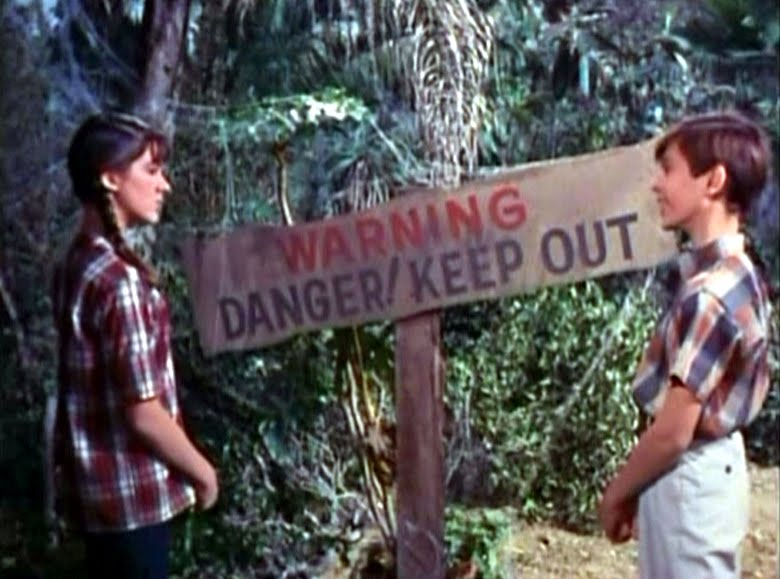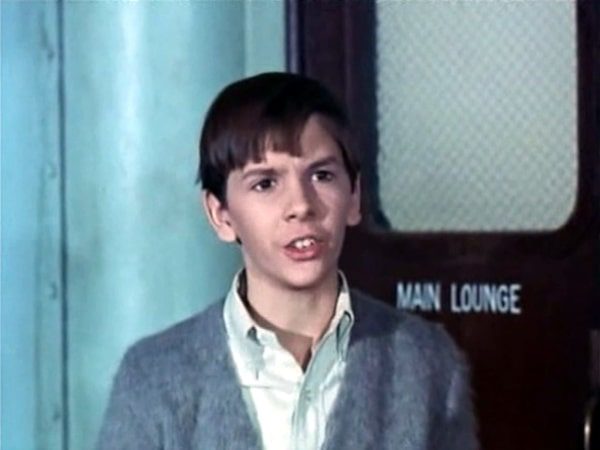Per William Castle, “Let’s Kill Uncle… Before Uncle Kills Everyone!”
DIRECTED BY WILLIAM CASTLE/1966
BLU-RAY STREET DATE: JUNE 2, 2020/KL STUDIO CLASSICS

Let’s Kill Uncle!… Let’s face it, that’s a sentiment not unknown to many, many people. But, how many of them were motivated by said uncle’s attempts to kill them first?
Such is the frightening case for twelve-year-old Barnaby (Pat Cardi), a parentless boy worth upwards of five million dollars. When Barnaby is sent off to live with his relatives on an island, trouble soon follows!
And there’s Chrissie (Oscar nominee Mary Badham, To Kill a Mockingbird). Chrissie, a girl the same age as Barnaby and also relegated to the island (apparently near Canada) is just so annoying. The ship-ride there is nothing but arguing, chases, and bickering. So yeah, it’s only inevitable that these two bond as buds once they start exploring the island’s creepy abandoned hotels and perilous cliff-side ocean views.
Just over thirty minutes into the ninety-two-minute movie, the titular Uncle shows up. And yes, he’s got it in for Barnaby. (And by extension, Chrissie). Nigel Green plays Uncle-Major Kevin Harrison, a lethal British intelligence commander, with proto-Palpatine aplomb. As the film’s ad copy promises, he utilizes a shark that is somehow living alone in a pool, hypnotism, fire, and poisonous mushrooms in his homicidal attempts against the children. Or, per other ad copy for the film, “uncle-cide”.

Directed by the greatly notorious huckster if not always notoriously great director William Castle, it must be said that Let’s Kill Uncle isn’t the roller coaster thrill ride that it’s sold to be. This should not come as a surprise, as Castle’s penchant for overhype and sensationalism lead the way in his more well-known gimmick-driven films of the decade previous to this, such as The Tingler (in which hidden buzzers vibrated theater seats whenever a scream occurs on screen). Instead of concentrating on over-the-top external selling points, Castle is content this time to simply make a horror movie for kids, and a humble one at that. It all plays out rather toothlessly, but perhaps the ending is more twisted than it initially seems.
But, as film historians Kat Ellinger and Mike McPadden discuss on their quite pleasant yet expansive audio commentary, kids loved William Castle. And with understandable reason – Castle had a flair for just the kind of dark sensibilities that children love. Ellinger points out, there’s a reason William Castle was the only director with his own fan club. They also contextualize Let’s Kill Uncle alongside of the live-action Disney movies of the time, in which a boy and a girl would carry the story told via moderate-at-best means. Unlike Disney animated fare, those movies have proven to be in no way memorable with few exceptions. The non-Disney Let’s Kill Uncle, as Ellinger and McPadden observe, exists at the darkest possible edge of that type of film. In a separate newly recorded video interview with the grown-up Pat Cardi, he suggests that instead of being the box office flop it ended up being, Let’s Kill Uncle might’ve been better off as a TV movie.

Though Let’s Kill Uncle takes a good while to get going, once the scenery-masticating Nigel Green arrives, things hit a reasonably neutral stride. The children get the job done, selling a crooked tale rife with questionable decisions by the other non-murderous adults. (Why’d they make Barnaby take a plane ride alive with Uncle Harrison after the boy has reported several attempts in his life?? It’s one thing to not believe him; it’s another to completely disregard his fear of the man). It’s a perfect so-so movie that kids and people who grew up the movie, as well as William Castle completists, may appreciate seeing today. The 2K restoration on Kino Lorber Studio Classics’ Blu-ray is the icing on the deadly cake.
And thankfully, rather than being buried by the ever-pounding tide of cinema history, Let’s Kill Uncle can now live again. And no one gets hurt.
The images and promotional material used in the review are present only as a reference to the film and are not meant to reflect the actual image quality or content of the Blu-ray.

